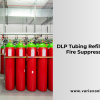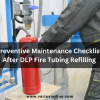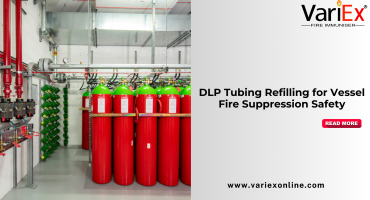![]()
Fire Immuniser
+91-7829629111
Email: info@variex.in
Varistor Technologies Pvt. Ltd.
Block-1, First Floor, Ardente Office One, Hoodi Circle, ITPL Main Road, Bengaluru, Karnataka 560048, IN
How To Install Commercial Fire Sprinkler System
Installing a commercial fire sprinkler system is a critical step in ensuring the safety of occupants and protecting property in commercial buildings. These systems are designed to detect and control fires, limiting their spread and minimizing damage. Proper installation is essential for the system to function effectively in the event of a fire emergency. This guide outlines the steps involved in installing a commercial fire sprinkler system.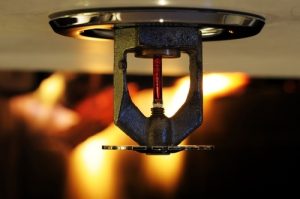
Asses Building Requirements:
- Before beginning the installation process, conduct a thorough assessment of the building's layout, occupancy, and fire protection needs.
- Identify high-risk areas, such as kitchens, mechanical rooms, and storage areas, where sprinklers may be required.
- Consult local building codes, regulations, and insurance requirements to ensure compliance.
Design the System:
- Work with a qualified fire protection engineer or designer to develop a comprehensive system design.
- Determine the type of sprinkler system needed (wet pipe, dry pipe, pre-action, or deluge) based on building characteristics and fire hazards.
- Create a layout plan detailing the location of sprinkler heads, pipes, control valves, and alarm devices.
- Ensure proper hydraulic calculations are performed to determine water flow and pressure requirements.
Obtain Permits and Approvals:
- Obtain necessary permits from local authorities having jurisdiction (AHJ) before commencing installation.
- Submit detailed plans and specifications to AHJ for review and approval.
- Address any feedback or modifications required by the AHJ before proceeding with installation.
Gather Materials and Equipment:
- Procure high-quality sprinkler heads, pipes, fittings, valves, hangers, and other components from reputable suppliers.
- Ensure all materials meet relevant industry standards and are suitable for the intended application.
- Prepare necessary tools and equipment for installation, including pipe threading machines, wrenches, drills, and safety gear.
Install Piping and Components:
- Begin by installing the main supply pipe from the water source to the sprinkler system riser.
- Lay out and secure branch lines and distribution pipes according to the approved design.
- Install control valves, backflow preventers, alarm devices, and other components as specified in the design.
- Follow manufacturer's guidelines and industry best practices for pipe joining, sealing, and support.
Mount Sprinkler Heads:
- Install sprinkler heads at designated locations according to the approved layout plan.
- Ensure proper spacing and coverage to provide effective fire protection throughout the building.
- Use appropriate mounting brackets or fittings to secure sprinkler heads to ceilings or walls.
- Verify that sprinkler heads are positioned correctly and are free from obstructions.
Connect to Alarm and Monitoring Systems:
- Connect sprinkler system components to fire alarm panels, water flow switches, and monitoring devices.
- Test alarm and monitoring connections to ensure proper functionality and communication.
- Integrate the sprinkler system with other building fire protection systems, such as smoke detectors and emergency lighting.
Conduct System Testing and Commissioning:
- Conduct a thorough inspection of the installed system to verify compliance with design specifications and regulatory requirements.
- Perform hydrostatic pressure tests to check for leaks and ensure system integrity.
- Conduct functional tests of sprinkler heads, control valves, alarm devices, and water flow switches.
- Coordinate with AHJ for final inspections and approvals before placing the system into service.
Provide Training and Maintenance:
- Train building owners, managers, and occupants on the proper operation and maintenance of the fire sprinkler system.
- Establish a regular inspection, testing, and maintenance schedule to ensure ongoing system reliability.
- Document all system installations, tests, inspections, and maintenance activities for compliance and record-keeping purposes.
Installing a commercial fire sprinkler system requires careful planning, design, and execution to provide effective fire protection for occupants and property. By following the steps outlined in this guide and working with qualified professionals, building owners can ensure the successful installation and operation of a reliable fire sprinkler system. Compliance with local codes, regular maintenance, and ongoing training are essential for maintaining the system's readiness to respond to fire emergencies effectively.
Frequently Asked Questions
Commercial fire sprinkler systems are designed to detect and suppress fires quickly, minimizing damage to property and reducing the risk of injuries or fatalities to occupants. Installing a fire sprinkler system is often required by building codes and insurance regulations and can significantly enhance the safety and protection of your commercial property.
The type of fire sprinkler system needed depends on various factors, including the building's occupancy type, size, layout, and fire hazards present. Common types of fire sprinkler systems include wet pipe, dry pipe, pre-action, and deluge systems. Consulting with a qualified fire protection engineer or designer can help determine the most suitable system for your specific requirements.
The time required to install a commercial fire sprinkler system varies depending on factors such as the size and complexity of the building, the type of system being installed, and local regulatory requirements. A typical installation may take several weeks to complete, including design, permitting, material procurement, installation, testing, and commissioning.
Yes, regular maintenance is essential to ensure the continued effectiveness and reliability of fire sprinkler systems. Maintenance tasks may include periodic inspections, testing of system components, checking for leaks, and ensuring proper water supply. It's crucial to establish a maintenance schedule and work with qualified professionals to conduct inspections and servicing as required by regulatory standards.
In many cases, installing a fire sprinkler system can lead to reduced insurance premiums for commercial properties. Insurance companies often offer discounts for buildings equipped with fire protection systems that meet specific safety standards and reduce the risk of fire-related damage. Be sure to discuss potential insurance savings with your insurance provider before installing a fire sprinkler system.
Final Say
At VariEx.in and VariexOnline.com, we specialize in supplying and installing top-quality fire fighting systems and equipment. From fire extinguishers to advanced suppression systems, we offer comprehensive solutions tailored to your needs. Our experienced team ensures precise installation and maintenance for optimal safety.
Trust VariEx for reliable fire protection. Contact us online or call 7829629111 to learn more.
"WHAT YOU CAN READ NEXT"
 Read more +24 November 2023 in Fire Extinguisher
Read more +24 November 2023 in Fire ExtinguisherWhat types of fire extinguishers are available for different fire classes?
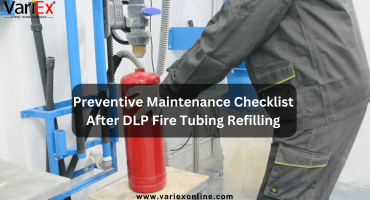 Read more +11 July 2025 in Fire Suppression
Read more +11 July 2025 in Fire Suppression

